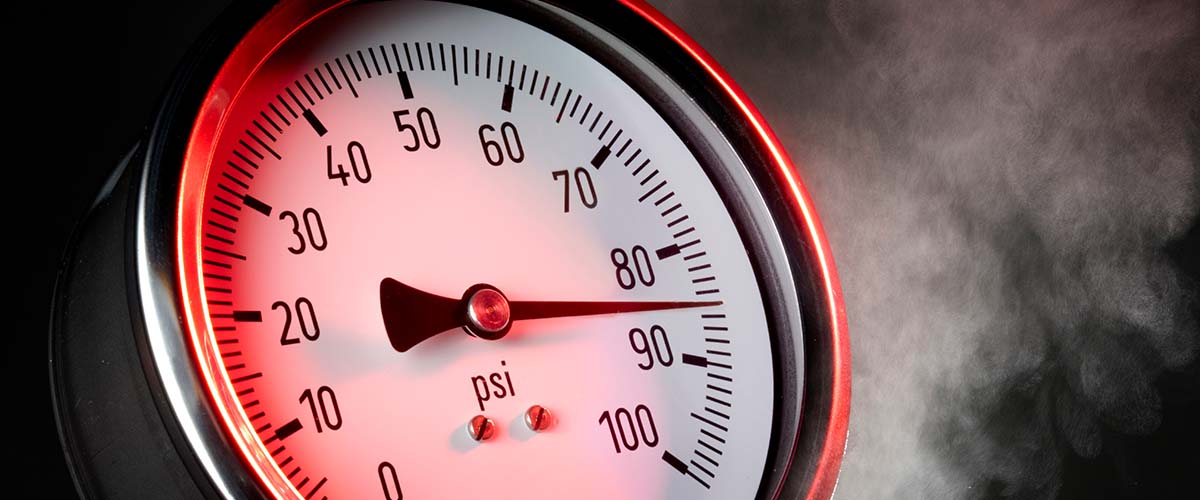Wondering about high water pressure and whether you need a pressure-reducing valve (PRV)? Normal home pressure lives around 40–60 PSI; once you’re over 80 PSI, you’re in territory that can beat up valves, appliances, and pipes. That’s not scare talk—it’s code territory. And high pressure can masquerade as “poor performance” if a clogged aerator, cartridge screen, or filter is choking flow. Let’s sort nuisance from danger fast: start with the easy checks, move to a pressure test, then repairs—and I’ll point out exactly when it’s time to call for backup.
Quick Fixes: 5-Minute Checks
First, the simple stuff. The aerator—fancy word for that screen thing—on your faucet can clog and create spray, hiss, or pulsating flow. Unscrew it, rinse debris, soak in vinegar for 10 minutes, and reassemble. Do the same for showerheads: remove, backflush, and inspect the rubber washer. These quick checks can be done in a matter of minutes, giving you a sense of control over your home’s water pressure.
Confirm shutoff valves under sinks and toilets are fully open. Quarter-turn ball valves should align with the pipe when open; you’ll hear that hollow thunk when the valve finally gives after being sticky. If it’s a gate valve, turn carefully; they shear. If a valve feels spongy, stop.
One more thing I check a lot: hot vs. cold. Open just cold. Then open just hot. If cold blasts and hot dribbles, your water heater or hot-side restriction is likely. If both misbehave, it’s a house issue.
Quick tangent: A client’s “bad PRV” turned out to be a pea stuck in a kitchen aerator. Thirty seconds. Big smile.
Okay, the aerator’s clean but still weak? Let’s go deeper.
Intermediate: Check Water Pressure Regulator (PRV), Filters, and Test Pressure
Now we measure. Pick up a hose-bib pressure gauge (about $15–$25) and screw it on an outdoor spigot or the laundry faucet. With all fixtures off, read static pressure. According to industry guidelines (code), residential supply should be 40–60 PSI; 80 PSI is the usual maximum before code requires regulation. Run a faucet and watch pressure drop—dynamic pressure helps spot restrictions.
If you see 80+ PSI, yes, you need a pressure reducing valve (PRV) or your existing PRV needs adjustment or replacement. Many PRVs have a top screw: clockwise increases, counterclockwise decreases. Adjust 1/4 turn and check the gauge. Per manufacturer instructions and code best practices, shut off water and relieve pressure before removing or replacing a PRV.
Have a whole-house sediment filter? A clogged cartridge can mimic low pressure with weird surges. Bypass it or replace the cartridge and retest. Here’s what they don’t tell you in the manual: gauges don’t lie. Leave the gauge on overnight. If it spikes while you sleep, your supply of thermal expansion is pushing past 80.
Pressure testing and a cartridge swap usually take 10–20 minutes. A PRV adjustment, 10 minutes. If you require replacement, plan on 2–3 hours.
Advanced: Diagnosing and Detecting Leaks
If pressure is fine at rest but jumps after the water heater heats up, thermal expansion may be the culprit. Closed systems need an expansion tank, precharged to match house pressure. Without it, pressure can spike over 80 PSI even with a PRV.
Check toilets. Add a few drops of dye to the tank; if the color seeps into the bowl, you’ve got a silent leak wasting water and confusing your pressure readings. Inspect the water meter’s small “leak indicator” triangle; if it moves with everything off, you likely have a leak. Irrigation zones are common, including stuck valves and cracked lines. Slab leaks? Warm floor spots, sudden high bills, and a constantly spinning meter are your tells.
Acoustic thumps (water hammer) after fast-closing fixtures usually point to high pressure or no hammer arrestors. And if your temperature and pressure relief (T&P) valve on the heater drips when heating, pressure is probably spiking.
A thorough house diagnostic with meter checks and thermal expansion testing runs 60–90 minutes. For comprehensive leak detection services, professional equipment can pinpoint issues faster than DIY methods.
When to Call a Professional
Call a pro if your static or overnight pressure exceeds 80 PSI, you hear persistent banging, or you’ve got pinhole leaks in copper— high water pressure loves to expose weak spots. Also call if your PRV won’t adjust, is older than 10–15 years, or if the expansion tank feels waterlogged (heavy, no hollow sound when tapped).
Cost of Hiring a Professional in Winston Salem, NC
Service visit costs and PRV replacements can vary depending on home layout, pipe material, and system condition. Contact a licensed plumbing professional for an accurate estimate based on your home’s setup.
Safety note: per code, shut off the main, relieve pressure at a faucet, and cap open lines. Adjustments or replacements near gas water heaters require clearances and ignition safety. Our experienced plumbing professionals understand these safety requirements and local codes.
Frequently Asked Questions
Do I need a water pressure regulator?
If your gauge shows 80+ PSI at any point, yes. According to industry guidelines and code, that’s above the allowed maximum.
Will a PRV reduce flow?
Properly sized and set, typically no. It stabilizes pressure; undersized valves can choke flow.
Can I just adjust my PRV?
Usually. Turn the screw slowly and verify with a gauge. If adjustments don’t hold, replace it.
How long do PRVs last?
Typically 7–15 years, depending on water quality and usage.
What about only hot water issues?
If cold is fine and hot is weak, suspect heater sediment, a mixing valve, or clogged hot-side lines.
Are water hammer arrestors required?
Not always, but with high-pressure or fast-closing valves, they prevent banging and damage.
Next Steps for Managing High Water Pressure
- Clean faucet aerators and showerheads to rule out simple blockages
- Use a pressure gauge on an outdoor faucet to test static and dynamic pressure
- Inspect your pressure-reducing valve (PRV) and attempt a gentle adjustment
- Monitor for pressure spikes overnight or after water heater cycles
- Watch for signs of thermal expansion or a failing expansion tank
- Look for silent toilet leaks or unexpected water meter movement
- Contact PF Plumbing if pressure exceeds 80 PSI or adjustments don’t hold
If you’re in Winston Salem and the gauge says 80+, don’t wait. Regulators are cheaper than ceilings and soaked floors. For more insights from homeowners dealing with similar issues, check out this community discussion about high water pressure and PRV needs.

